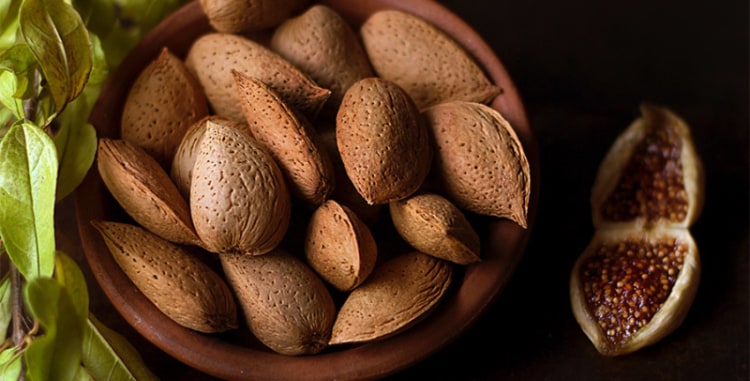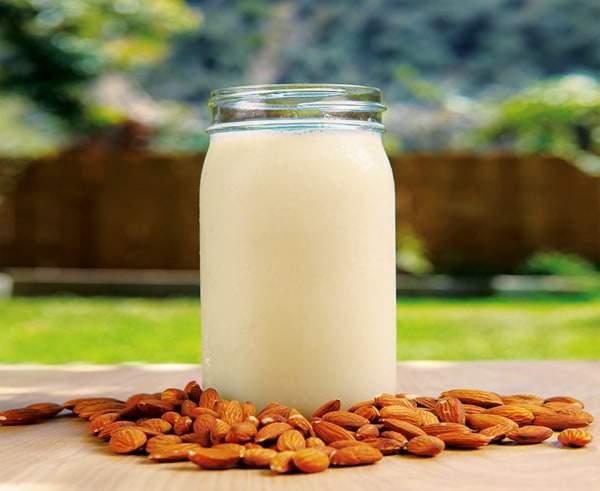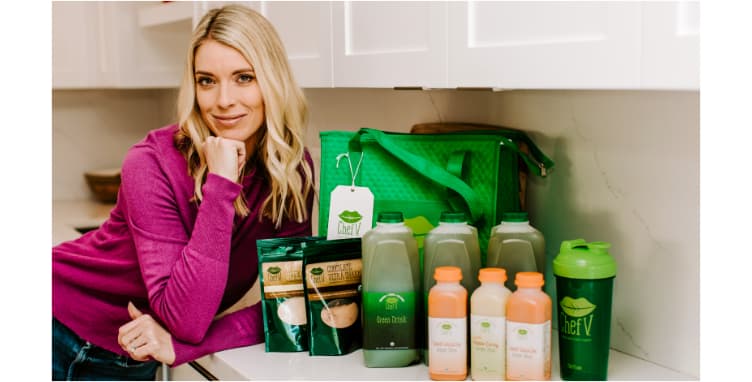Chef V reveals the surprising truth about problematic nut milk ingredients and lays down a recipe for a clean and creamy almond milk you’ll be sure to love.
It’s kind of weird if you think about it: humans are the only species on Earth that drink the milk of another species. But I’m not one of them. I stopped drinking regular milk years ago, even before becoming a certified nutrition therapist. Even if you’re not lactose-intolerant, conventional dairy milk can be one of the highest inflammatory foods. And you certainly don’t need cow’s milk to get your daily dose of calcium. You can get plenty of it from plant-based foods.
As more and more people realize the connection between dairy products and inflammation in the body, sales of plant-based milk have soared. In fact, the plant-based milk market is expected to be worth nearly $43 billion globally by 2029.
But just because it’s plant-based doesn’t necessarily mean it’s healthy or tasty. Many store-bought brands of plant-based milk have 2 big problems. First of all, some of them contain a very concerning ingredient I’ll tell you about. And secondly, if you’ve ever sampled a diverse range of almond, cashew, oat, coconut, rice and soy milk, many of them are so lacking in natural ingredients that they have the mouthfeel of water.
So keep reading because further down, I’ll share with you my recipe for homemade almond milk that’s so creamy and clean, you can have as many cups of it as your belly desires without worrying about bloating.
The Ingredient In Nut Milk That Gives Lab Rats Ulcers
Not all plant-based milks have this concerning ingredient I’m about to reveal. But many nut milks do. Even if you go shopping at so-called health-food stores like Whole Foods, this ingredient may very well be lurking in some brands of nut milk.
So, have you ever heard of carrageenan? It’s a food additive that actually comes from a very healthy source: seaweed. Sea veggies are probably the most underrated food in the west. But carrageenan is not the same as eating sea vegetables that are served in Asian restaurants.
Food manufacturers add carrageenan to certain products like plant-based milk to thicken, emulsify (blend liquid ingredients that normally don’t like to blend like oil and water), and stabilize.
When it comes to controversial nutrition topics, carrageenan is right up there with cholesterol. There are some people who think the dangers of carrageenan are overblown. So what are those dangers? Well, I did some research because I wanted to see for myself what all the debate over carrageenan was all about.
And we’ll start with something that should make your stomach turn after reading this. So in this research study, it said that carrageenan has been associated with intestinal ulcers in animals that are used in experiments. And because of this, the researchers concluded that the pervasive use of carrageenan in Western food production should be reconsidered.
I don’t know about you, but that’s enough motivation for me to learn how to make my own almond milk!
And not only that, a study from way back in 1988, long before nut milks were booming, said that carrageenan damages the cells of the intestinal lining. So that means that carrageenan could be an ingredient that’s directly responsible for causing leaky gut.
These weren’t the only two studies I found that raised some big questions about carrageenan. But you get the idea.
Make Milk Healthy Again
So how can you tell if there’s carrageenan in the plant-based milk you like or are considering buying? Read the food labels. It’s as simple as that.
In general, when you’re buying any type of food or beverage that comes in a carton, bottle, jar, etc., it should contain only a handful of ingredients. That means it’s been minimally-processed.
You’ll notice that when you look at the ingredients label in many best-selling brands of nut milk, there’s a dozen or more ingredients.
I realize not everybody is going to have the interest or the time to make their own nut milk (It actually doesn’t take much time or effort!). But at the very least, if you’re going to purchase nut milk in the store, choose a brand with the least amount of ingredients, without carrageenan. And also choose a product that’s unsweetened to reduce your intake of added sugars.
Some nut milk producers have realized that carrageenan is a dubious ingredient. And so they have switched it with other stabilizers like gellan gum. I tried to dig up some negative dirt on gellan gum. But thankfully it seems to be fine for digestive health.
Make Nut Milk Creamy Again
I can’t stand the taste of store-bought almond milk. It’s basically glorified water with some synthetic vitamins and preservatives. You’re better off just drinking water and taking whole-food derived vitamin supplements.
Some brands of almond milk are so watered down that it should be illegal for them to call it “nut milk.” In fact, Blue Diamond, one of the most popular brands of plant-based milk, has been hit with more than one lawsuit over the years because of false marketing claims. In 2015, Blue Diamond was hit with a class action suit because its almond milk was found to contain only 2% almonds!
2% might be good when you’re talking about the percentage of milk fat in relation to the total weight of the milk (2% milk). But when it comes to almond milk, 2% of the ingredients being only 2% won’t cut it for making creamy milk.
Chef V’s Recipe for Creamy, Delicious, Preservative-Free Almond Milk
Thirsty for some healthy almond milk? Learn how you can easily make it by clicking here.
My homemade almond milk only contains two ingredients: organic almonds and pure water. You can actually taste the nutty richness of the almonds.
Welcome back to drinking milk!




